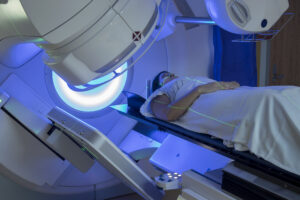
The American Lung Association in North Carolina released its 2023 “State of Lung Cancer” report, which finds that the incident rate of lung cancer cases in the state is far too high. North Carolina has 63 new cases per 100,000 people, compared to the national average of 54.6 new cases per 100,000 people. Working to increase lung cancer screenings and early diagnosis is key to addressing the burden of lung cancer in North Carolina.
The 6th annual report highlights the toll of lung cancer in North Carolina and examines key indicators including new cases, survival, early diagnosis, surgical treatment, lack of treatment and screening rates.
While the incident rate of lung cancer cases is too high in North Carolina, the report also finds that the state ranks above average for lung cancer screening and above average for lack of treatment. However, health disparities exist. Asian or Pacific Islander individuals in North Carolina are least likely to be diagnosed early.
“Lung cancer continues to be the leading cause of cancer deaths here in North Carolina and across the nation. Our recent report makes it clear that we have more work to do to increase lung cancer screening and early detection initiatives, as well as address health disparities in our AAPI community,” said Markus Hill, chair of the Lung Association’s North Carolina Board.
The report found that North Carolina ranks:
- 39 out of 48 in the nation for rate of new lung cancer cases at 63.0 per 100,000. The national rate is 54.6 per 100,000.
- 21 out of 42 in the nation for survival at 26.0%. The national rate of people alive five years after a lung cancer diagnosis is 26.6%.
- 26 out of 47 in the nation for early diagnosis at 26.6%. Nationally, only 26.6% of cases are diagnosed at an early stage when the survival rate is much higher.
- 11 out of 51 in the nation for lung cancer screening at 7.1%. Lung cancer screening with annual low-dose CT scans for those at high risk can reduce the lung cancer death rate by up to 20%. Nationally, only 4.5% of those at high risk were screened.
- 28 out of 47 in the nation for surgery at 19.4%. Lung cancer can often be treated with surgery if it is diagnosed at an early stage and has not spread. Nationally, 20.8% of cases underwent surgery.
- 12 out of 47 in the nation for lack of treatment at 17.5%. Nationally, 20.6% of cases receive no treatment.
- 26 out of 51 in the nation for smoking at 14.4%. Nationally, 13.5% of adults currently smoke.
North Carolina became the 41st state (including the District of Columbia) to expand Medicaid to adults with incomes up to 138 percent of the federal poverty level, enacting the move in its 2023-2024 fiscal budget. Beginning December 1, 2023 more than 600,000 low-income children, adults, pregnant individuals, people with disabilities, and seniors will gain access to health care.
Nationally, the “State of Lung Cancer” report finds that lung cancer survival rates are improving for everyone, including people of color. In fact, the five-year lung cancer survival rate for people of color has increased by 17% in the last two years, helping close the health disparity gap.
“Thankfully, nationally, the lung cancer survival rate has improved because of increased awareness, improved access to healthcare and cutting-edge research into new treatments for the disease,” added Hill. “We need to keep up the momentum to save more lives.” (source)
Related Reading:
American Cancer Society Updates Guidelines for Lung Cancer Screenings
